
The 1930 FIFA World Cup was the inaugural FIFA World Cup, the world championship for men's national football teams. It took place in Uruguay from 13 to 30 July 1930. FIFA, football's international governing body, selected Uruguay as the host nation, as the country would be celebrating the centenary of its first constitution and the Uruguay national football team had retained their football title at the 1928 Summer Olympics. All matches were played in the Uruguayan capital, Montevideo, the majority at the purpose built Estadio Centenario.

Bertrand "Bert" Arthur Patenaude was an American soccer player who played as a forward. Although it was formerly disputed, he is officially credited by FIFA as the scorer of the first hat-trick in World Cup history. He is a member of the United States Soccer Hall of Fame.

Racing Club de Avellaneda, officially known as Racing Club, is an Argentine professional sports club based in Avellaneda, a city of the Buenos Aires Province. Founded in 1903, Racing has been historically considered one of the Big Five clubs of Argentine football, and is also known as El Primer Grande, for becoming the first club in the world to win seven league titles in a row, first Argentine club to win a national cup, and the first world champion Argentine club. Racing currently plays in the Primera División, the top division of the Argentine league system, and plays its home games at Estadio Presidente Perón, better known colloquially as El Cilindro.

Alfio "Coco" Basile is an Argentine football manager and former player. He played for Racing Club de Avellaneda and Huracán before becoming a manager. He coached many teams during his career, being most notable Racing Club de Avellaneda, the Argentina national team and Boca Juniors, where he won five titles in two years.
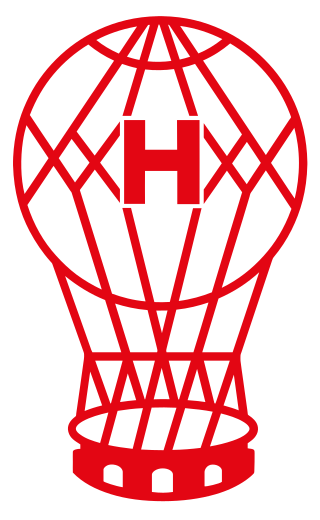
Club Atlético Huracán is an Argentine sports club from the Parque Patricios neighbourhood of Buenos Aires. The club is notable for its football team, that currently plays in the Primera División, the top level of the Argentine football league system. Its home stadium is the Estadio Tomás Adolfo Ducó.
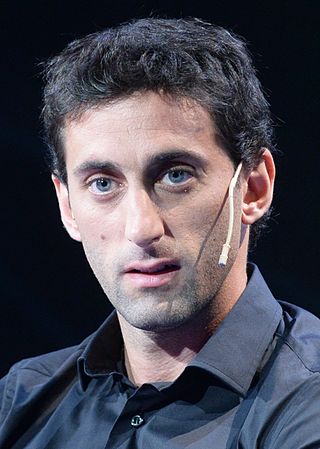
Diego Alberto Milito is an Argentine former professional footballer who played as a striker. He was nicknamed Il Principe because of his physical resemblance with former Uruguayan footballer Enzo Francescoli, who had the same nickname.
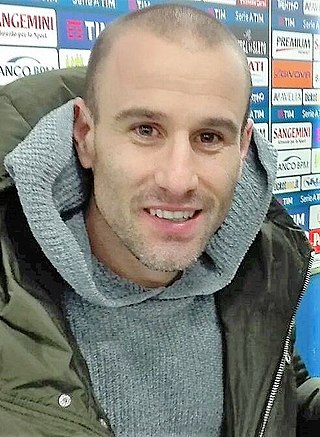
Rodrigo Sebastián Palacio Alcalde is an Argentine professional basketball player and former footballer who played as a second striker. He is the son of José Ramón Palacio, a historic player of Club Olimpo during the 1980s. Palacio holds a Spanish passport, allowing him to be counted as an EU player.

Ángel Amadeo Labruna was an Argentine footballer and coach who played as a forward. With 323 goals scored in official matches, which include 294 league goals, Labruna is the 2nd all-time top scorer of Primera División after Paraguayan Arsenio Erico. Labruna was also part of the celebrated River Plate offense, nicknamed La Máquina, and he was considered one of the best South-American footballers of his generation. In his career, Labruna scored 564 goals.

Adolfo Alfredo Pedernera was an Argentine football player and coach. Nicknamed "El Maestro", he was widely considered to be one of the best world football players in the 1940s and one of the greatest Argentine players of all time. Pedernera was the natural conductor of both the famous River Plate team known as La Máquina, with whom he won several Argentine and South American titles, and the Millonarios team called Ballet Azul that won the Small Club World Cup in 1953 among many others Colombian titles.

René Orlando Houseman, nicknamed Loco, was an Argentine footballer, who played as a right winger. At the beginning of his career, Houseman was considered successor of legendary winger Omar Corbatta, being still regarded by many sports journalists as one of the best wingers ever.

Miguel Ángel Brindisi de Marco is an Argentine football coach and former player. An attacking midfielder, he played for the Argentina national team at the 1974 FIFA World Cup.
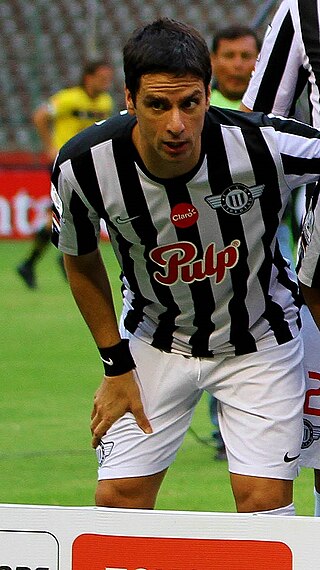
Hernán Rodrigo López Mora, also known as Rodrigo López, is an Uruguayan football manager and former player who played as a forward.

This is a record of Argentina's results at the FIFA World Cup. Argentina is one of the most successful teams in the tournament's history, having won three World Cups: in 1978, 1986, and 2022. Argentina has also been runner-up three times: in 1930, 1990 and 2014. In 18 World Cup tournaments, Argentina has 47 victories in 88 matches. The team was present in all but four of the World Cups, being behind only Brazil and Germany in number of appearances.

Francisco Olazar was an Argentine football player and coach. He played as a central midfielder.

José Manuel Durand Laguna was an Argentine football player and manager.
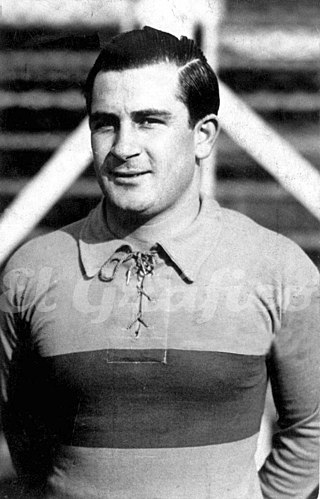
Mario Francisco Fortunato was an Argentine football player and manager. Fortunato won three championships as a player with Boca Juniors and went on to lead the club to four Primera División and two domestic cups as manager.

Eduardo Ricagni was a professional football player and coach. A winger, at club level he won one Italian league title and was the top scorer of the Argentine Primera División in 1952. At International level he was born in Argentina but played for the Italy national team. He later became a coach in Greece.
This is a list of statistical records for the Argentina national football team.
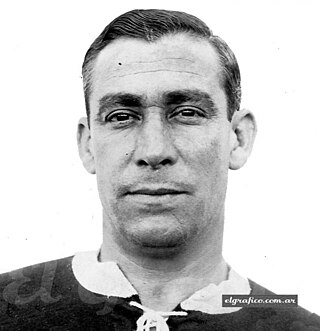
Zoilo Canavery was a Uruguayan football player. Born in Montevideo, Canavery was a notable figure of Argentine sport during the 1910 and 1920 decades, playing in four of the "big five" of Argentina, such as Independiente, River Plate, Racing and Boca Juniors.

Oscar Pablo Rossi, nicknamed Coco, was an Argentine association football player. During his career in the 1950s and 1960s Rossi played for several clubs from Buenos Aires and was member of the Argentine squad in the 1962 FIFA World Cup.





















